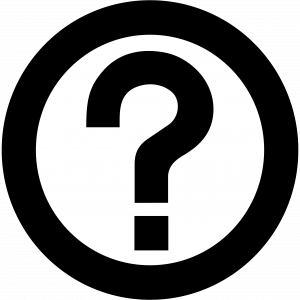Student Guide to Reflection
 Introduction
Introduction
Reflection is a means of extracting more learning from our experiences, leading to deep understanding of knowledge, connections to other contexts, and an improved sense of self-efficacy.
This module provides students with essential knowledge of written reflection, including the topics of fundamental reflection and strategies in writing reflection.
 Modes of Learning
Modes of Learning
In this module, students will use the following modes of learning:
- A video
- A short assessment
- A writing activity
This module will take approximately 60 minutes to complete.
 Intended Learning Outcomes
Intended Learning Outcomes
By the end of this module, participants will be able to…
- Identify the fundamental components of written reflections
- Write a simple, written reflection using the ‘What? So what? Now what?’ framework
 Key Terms & Concepts
Key Terms & Concepts
 Topic 1: Basics of Reflection
Topic 1: Basics of Reflection
It is important to understand the essential principles behind written reflection. The following video will walk you through the fundamental process of reflection, examples of what reflection looks like, and why we should reflect as lifelong learners.
Watch Basics of Reflection in full screen.
 Quiz
Quiz
Complete the short quiz below by matching the statements on the right with the corresponding section of the ‘What? So What? Now What?’ model on the left.
 Topic 2: Writing a Reflection
Topic 2: Writing a Reflection
Now that you’ve gained a better understanding of what reflection is and why we do it, it’s your turn to practice. The following video will provide you will an example of a student’s written reflection to prepare you for writing your own.
Watch Writing a Reflection in full screen.
Reflection Example
Below is a text copy of the reflection example provided in the video:
In the fourth year of my undergraduate program, I participated in a laboratory activity in which we were to compare the theoretical levels of xenon in the McMaster Nuclear Reactor (MNR) with the actual data logs recorded by the reactor operators. This lab report was done individually. One aspect that made me nervous was that I was not comparing theoretical xenon level directly to recorded xenon level, but rather I had to calculate the measured xenon levels based on the activities recorded by the operators. I was nervous that I would not be able to interpret the operators’ notes correctly, which would then make it very hard to compare to a theoretical model.
Initially after converting the operator records, I found that the data was not fitting the theoretical levels whatsoever. I was really discouraged by this, so I referred to the course readings to see where I might have missed vital information. After looking back, I had realized that I missed two important, yet subtle, steps in converting the data. I had not accounted for the fact that the polarity of the two measurements were reversed, and so I needed to flip one of the graphs. I also missed an offset, meaning I had to shift one of the graphs down. After making these corrections, the data was a perfect fit! Seeing the two graphs line up was very fulfilling, and it was the result of applying knowledge that I had learned, while also identifying knowledge that I had misunderstood or missed entirely the first time.
This lab was important to nuclear engineering because xenon levels are what dictates whether a reactor can be powered on or not. By going through this lab, I am now aware how, as a reactor operator, I would be able to judge the status of reactor based on these readings. Having recognized the calculations that I did not do properly the first time, I feel much more confident about never forgetting those steps again.
 Reflection Writing Activity
Reflection Writing Activity
Think of an important educational experience that you’ve had and, on a separate piece of paper or in a Word document, write a reflection about it. Be sure to address each point of the ‘What? So what? Now what?’ model.
Use the questions below to guide your thinking and writing about each section of the model.
Here is an example of a student working through the reflective process.
 References
References
Ambrose, S. A. (2013). Undergraduate engineering curriculum: The ultimate design challenge. The Bridge, 43(2), 16-23
Ash, S. L., & Clayton, P. H. (2009). Generating, deepening, and documenting learning: The power of critical reflection in applied learning. Journal of Applied Learning in Higher Education, 1(1), 25-48.
Borton, T. (1970). Reach, touch, and teach (pp. 75-91). New York. McGraw-Hill.
CPREE. (n.d.) What is Reflection? Consortium to Promote Reflection in Engineering Education (CPREE). http://cpree.uw.edu/what-is-reflection/
Dewey, J. (1966). Democracy and education: An introduction to the philosophy of education. The Free Press.
Driscoll, J. (1994). Reflective practice for practice. Senior Nurse, 14(1), 47-50.
Rolfe, G., Freshwater, D., & Jasper, M. (2001). Critical Reflection for Nursing and the Helping Professions: A User’s Guide. Palgrave.
Ryan, M. (2013). The pedagogical balancing act: Teaching reflection in higher education. Teaching in Higher Education, 18(2), 144-155.
Turns, J. A., Sattler, B., Yasuhara, K., Borgford-Parnell, J. L., & Atman, C. J. (2014). Integrating reflection into engineering education. [Paper Presentation]. 121st ASEE Annual Conference & Exposition, Indianapolis. https://depts.washington.edu/cpreeuw/wordpress/wp-content/uploads/2015/07/Integrating-Reflection-ASEE-2014.pdf

